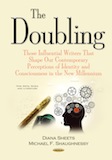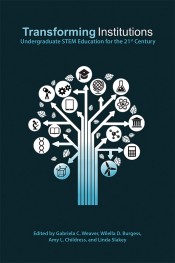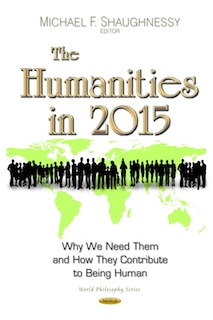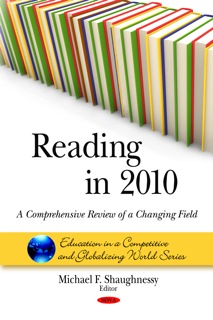Copyright © 2008 by Diana E. Sheets
For some forty years now the Democrats—champions of “progressive” causes exemplified in their advocacy of civil rights, gender equality, and multifarious doctrines of identity politics and “fairness”—have, like the Israelites before them, wandered in the desert in search of the Promised Land. If we consider this Old Testament story as a literary metaphor, what is its political relevance to the 2008 presidential election?
This essay will argue that Barack Obama’s election as our forty-fourth president marks the end of Bamidbar for the Democrats. This peripatetic life of African Americans and, by inference, all marginalized Americans who have wandered in search of the Promised Land is over. They have arrived. Let us consider the story of the Israelites with respect to Obama’s historic victory.
The Israelites had been slaves in Egypt. God told Moses to liberate the Israelites, but stipulated that they wander for forty years in the Sinai desert. One interpretation of the scripture is that as slaves they could not know freedom. Years later, a new generation of Israelites had matured who were descendants of Egyptian slaves, but had no direct experience of subjugation. They walked as free men into the Promised Land.
For African Americans the journey from slavery to freedom has been protracted. Nominally it began in 1654 when lifetime ownership of slaves was legalized in America until the end of the Civil War (1865) when the practice was abolished (http://en.wikipedia.org/wiki/Slavery_in_the_United_States). However, it would be more than one hundred years later, during the American Civil Rights Movement (1955-1968), that social, legal, and cultural changes would ensue, resulting in substantive reforms. More than forty years would pass before these legislative reforms were widely accepted by Americans. Along the way there were milestones on the march toward this Promised Land. Among these was the landmark case Brown v. Board of Education of Topeka (1954) that was heard in the Supreme Court. It was argued and won by Thurgood Marshall, an African American and chief counsel of the NAACP. He was subsequently appointed a Supreme Court Justice in 1967. The ruling overturned the “separate but equal” doctrine with respect to educational institutions. In 1955, Rosa Parks refused to vacate her seat to a white passenger while traveling on a bus in Montgomery, Alabama. Two years later nine African-American students successfully integrated a school in Little Rock, Arkansas. There were “sit-ins” at lunch counters in department stores during the 1960’s. Freedom Riders, men and women pursuing civil rights reforms as they traveled by bus to regions south of the Mason-Dixon Line, campaigned to ensure desegregation of interstate buses, terminals, restrooms, and drinking fountains. The integration of the University of Mississippi (1962) paved the way for educational opportunities for African Americans and other minorities. The Civil Rights Act of 1964 prohibited segregation in schools, public spaces, and employment. The efforts to register African-American voters in the South led to the reforms mandated in the National Voting Rights Act (1965). Two years earlier the historic March on Washington led demonstrators to the steps of the Lincoln Memorial. There Reverend King delivered his memorable “I Have a Dream” speech, which envisioned an America in which blacks, whites, and all people might live together in harmony (http://en.wikipedia.org/wiki/I_Have_a_Dream). On April 4, 1968, while standing on a motel balcony in Memphis, Reverend King was assassinated (For an overview of the Civil Rights Movement, see http://en.wikipedia.org/wiki/American_civil_rights_movement.).
On the eve of his murder, Reverend King delivered a brooding sermon, “I See the Promised Land” to the congregation at the Mason Temple in Memphis. His conclusion was ominous, if prophetic.
And then I got into Memphis. And some began to say that threats, or talk about the threats that were out. What would happen to me from some of our sick white brothers?
Well, I don’t know what will happen now. We’ve got some difficult days ahead. But it doesn’t matter with me now. Because I’ve been to the mountaintop . . . . And I’ve seen the Promised Land. I may not get there with you. But I want you to know tonight, that we, as a people will get to the Promised Land . . . . Mine eyes have seen the glory of the coming of the Lord. http://library.thinkquest.org/C004391F/promis_land_speech.htm
Reverend King never made it to the Promised Land. For many Americans the assassination of President John F. Kennedy (1963), the murder of Reverend King (1968), the killing of Robert F. Kennedy (1968), and the effective end of the Civil Rights Movement (1968) dashed all hope of reaching the Promised Land.
Nevertheless, progress was made. John F. Kennedy advanced the cause of social justice through his advocacy of a “New Frontier.” Lyndon B. Johnson implemented the substance of these reforms—policies aimed at eradicating poverty and racism—through the enactment of legislation embodied in his programmatic initiative, the Great Society. While no president was more adept than Johnson at wielding power and influence to enact “progressive” policies, he was never embraced by social reformers as their spiritual leader.
In the years following Reverend King’s death, there would be no African American with his masterful rhetorical skills or his ability to unify a people and a nation. Neither of his two best-known disciples, Andrew Young and Reverend Jesse Jackson, despite their promise and contributions, reached across the divides of class, race, and gender to win the hearts of uncommitted Americans. Social progress continued, but the dream of an African-American leader bringing his people into the Promised Land remained in limbo. Racial acrimony—as evidenced in the speeches and sermons, respectively, of Reverend Al Sharpton and Reverend Jeremiah Wright—while it may have been celebrated in African-American communities where disaffection was high and its members nursed grievances born out of the belief that they were excluded from social mobility, never captured the hearts of other citizens walking along America’s Main Street. Only when Barack Obama turned to harmony in the 2008 presidential election did an African American win the hearts and votes of a broad cross-section of America’s electorate.
That opportunity—the hope of spiritual transcendence—would be delivered by a man born in the age of civil rights reforms who as a presidential candidate became the symbol of the “Multicultural Man” (Ross Douthat, “Palin Fire”, National Review, September 29, 2008, Vol. LX, No. 18, 40). The son to a white mother and an African father, Obama, as with the Israelites born in the desert, had only indirect associations with slavery. Having been raised in Hawaii and Indonesia, he experienced no significant discrimination. In Hawaii he attended one of the finest private schools. His talent and capabilities were encouraged by his teachers. His (white) maternal grandparents were largely responsible for nurturing and supporting him from the age of ten. He had minimal contact with his African father and his relatives in Kenya.
Obama’s victory in the 2008 presidential election marks the end of Bamidbar and the dawn of a new era. All Americans, whatever color or creed, are now officially citizens of the Promised Land. The election was won by legitimate means. It was achieved through electoral victory, rather than revolution. The outcome suggests that Americans, while perhaps not blind to race, nonetheless, voted their economic concerns, rather than their ethnic fears. Forty years ago, this outcome would have been inconceivable.
If Reverend King serves as Obama’s spiritual antecedent, John F. Kennedy represents Obama’s presidential icon. Indeed, no contemporary Democratic President seeking historical gravitas can afford to overlook the Kennedy legacy. Consider, for instance, Bill Clinton’s now famous advertisement, “The Man from Hope,” that spearheaded his successful 1992 campaign. He consciously invoked not only the memory of John F. Kennedy but also his personal connection with him. “It was in 1963 that I went to Washington and met President Kennedy at the Boy’s Nation Program. And I remember just, uh, thinking what an incredible country this was, that somebody like me, you know, who had no money or anything, would be given the opportunity to meet the President. That’s when I decided I could really do public service . . . .” (Drew Westen, The Political Brain, PublicAffairs, 4-5)
Weston suggests “The Man from Hope” was one of the most powerful television commercials in American politics. The purpose of the ad was to convey that Clinton represented “hope and the American dream.” It was a personal narrative, not a policy enumeration. The intent was to create a “multisensory network of associations” to win the emotional support of the American electorate (5).
How, then, does Barack Obama, who has no direct ties to President Kennedy, Reverend King, and the Civil Rights Movement of the sixties, establish in the minds of the voters his rightful claim? Two months after announcing his candidacy, Obama gave a speech in March of 2007 at the historic Brown Chapel A.M.E. Church in Selma, Alabama to commemorate Bloody Sunday. On March 7, 1965 nearly six hundred black protestors had gathered outside Brown Chapel. On behalf of voting rights, they began marching to the state capital, Montgomery, despite Governor Wallace’s prohibition. The demonstrators traveled barely six blocks and were crossing the Edmund Pettus Bridge when they were charged by state troopers on horseback. The protestors were brutally attacked with billy clubs, tear gas, bullwhips, and barbed wire encased in rubber tubing (http://www.nps.gov/nr/travel/civilrights/al2.htm). Several were bloodied and badly injured. Seventeen were hospitalized. The attack was televised to a national audience. Two days later, Reverend King led a symbolic protest from the chapel to the bridge. A third march succeeded in completing the 54-mile journey to Montgomery. President Johnson signed the National Voting Rights Act of 1965 five months later (http://en.wikipedia.org/wiki/Selma_to_Montgomery_marches).
From the Brown Chapel, Obama gave a speech in March of 2008 that recalled the Civil Rights protests that occurred in Selma and Birmingham, Alabama and their pivotal role in achieving voting rights for African Americans. In that historic setting, Obama imagined a conversation that might have occurred between Robert and Jack Kennedy. “’You know, we’re battling communism. How are we going to win hearts and minds all across the world if right here in our own country, John, we’re not observing the ideals set forth in our Constitution? We might be accused of being hypocrites’” (Jerome R. Corsi, The Obama Nation, Threshold Editions, a Division of Simon & Schuster, Inc., 2008, 31). Obama suggested that his father was part of the 1959 airlift sponsored by the Kennedys to provide Africans with educational opportunities. Obama then speculated that his father and his mother, “whose great-great-great-great-grandfather had owned slaves” might have “looked at each other and they decided that in the world as it has been, it might not be possible for us to get together and have a child (31).”
By means of this phantasmagorical spectacle, Obama was able to link Reverend King, John F. Kennedy, and Robert F. Kennedy to his father’s journey to America and, coincidentally, his own birth, thereby providing a direct and personal association with Reverend King, the Civil Rights Movement, and the myth of Camelot (30-35).
Truth, however, was quite another matter. Michael Dobbs proved that Obama Sr.’s arrival occurred in 1959, a year prior to the Kennedys support of the airlift, a discrepancy later acknowledged by Obama’s spokesman Bill Burton (Michael Dobbs, “Obama Overstates Kennedys’ Role in Helping His Father,” The Washington Post, March 30, 2008, A01, http://washingtonpost.com/wp-dyn/content/article/2008/03/29/AR2008032902031.html). Given that there was no longer a direct association between Obama and Camelot, he needed to create another Kennedy moment. This he sought to do by addressing an audience in Berlin in July of 2008 where he paid homage to John Kennedy’s famous “Ich bin ein Berliner” speech delivered forty-five years earlier. It was in the western sector of that great city that Kennedy praised the citizens of Berlin for their eighteen-year resistance to communism. “Freedom has many difficulties and democracy is not perfect, but we have never had to put a wall up to keep our people in, to prevent them from leaving us . . . . I know of no town, no city, that has been besieged for 18 years that still lives with the vitality and the force, and the hope and the determination of the city of West Berlin.” (http://en.wikisource.org/wiki/Ich_bin_ein_Berliner).
Obama’s speech, “A World that Stands as One,” as with so many of his public addresses, begins with a personal narrative before expanding to national and global concerns. Noting, “I know that I don’t look like the Americans who’ve previously spoken in this great city,” he talked about his mother, born in the heartland, and his father, who grew up “herding goats in Kenya.” He mentioned his paternal grandfather, “a cook, a domestic servant to the British.” Obama acknowledged the power of democracy and its particular resonance in Berlin, “This city, of all cities, knows the dream of freedom.” He recalled the American airlift to Berlin in 1948 when the Soviet Army blockaded the western sector of the city, depriving its citizens of essential food and supplies. Obama spoke of the “partnership” of America and Berlin in preserving freedom. Sixty years later, he added, Europe and America are at a new crossroad, sharing a “common destiny” in a world in which the threats to democracy know no national boundaries (http://cnn.com/2008/POLITICS/07/24/obama.words/index.html).
Poorly secured nuclear material in the former Soviet Union, or secrets from a scientist in Pakistan could help build a bomb that detonates in Paris. The poppies in Afghanistan become the heroin in Berlin. The poverty and violence in Somalia breeds the terror of tomorrow. The genocide in Darfur shames the conscience of us all. (“A World that Stands as One”)
Obama called for the divisions between nations and peoples to dissolve: between rich and poor nations, among races and tribes, between indigenous and immigrant peoples, and among Christian, Muslim, and Jewish believers. He urged a global commitment to meeting the challenges of the 21st century while promising to defeat terrorism (“A World that Stands as One”). It was a public-relations moment intended to be of historic import (Robert Schlesinger, “Barack Obama’s Berlin Speech: Popular today, but What Will History Say?” July 25, 2008, http://www.usnews.com/articles/opinion/2008/07/25/barack-obamas-berlin-speech-popular-today-but-what-will-history-say.html).
The “presidential moment” was not without difficulty. Obama wished to give his speech at the historic Brandenburg Gate, visited by John F. Kennedy in 1963 and where in 1987 Ronald Reagan called for Mikhail Gorbachev to “tear down this wall” and, later in 2004, Bill Clinton exclaimed “Berlin is free” (Peter Walker, Elana Schor, “Crowds gather in Berlin to hear Obama’s foreign policy speech,” July 24, 2008, http://guardian.co.uk/world/2008/jul/24/uselections2008.barackobama). However, Chancellor Angela Merkel resisted. Her spokesman suggesting that she has “little sympathy for the Brandenburg Gate being used for electioneering . . . .” (Gregor Peter Schmitz, “Obama Reacts to Debate in Berlin,” SpiegelOnline, July, 10, 2008, http://www.spiegel.de/international/world/0,1518,565080,00.html). Instead, the event was held in front of the Victory Column in Berlin. The crowds, estimated at 100,000 (Walker, Schor), were gathered to hear two popular bands, reggae artist Patrice and rock band Reamonn while waiting for Obama to arrive (Noel Sheppard, “Will Media Report Concert Before Obama’s Berlin Speech?” July 24, 2008, http://newsbusters.org/blogs/noel-sheppard/2008/07/24/will-media-report-concert-obamas-berlin-speech). As with so many Obama moments, it was lofty oratory set against a Hollywood-like spectacle crafted to mesmerize his global audience.
With the legacy of Reverend King and the associations—real or imagined—with John F. Kennedy, the Obama Presidency marks the end of Bamidbar as our new president strides confidently into the Promised Land. It has been a long hard-fought campaign with bitter accusations of all sides. The electorate has spoken. There will be an orderly transfer of power to Barack Obama’s administration.
It is hoped that Republicans remember how to serve as the loyal opposition. This requires civility. It necessitates willingness, when needed, to reach across the political divide to achieve legislative compromises that best serve the interests of our nation. Consider the 1962 photograph taken by Paul Vathis, which won the Pulitzer Prize. It was taken in the aftermath of the aborted Bay of Pigs invasion. President Kennedy and former President Eisenhower had just finished appearing jointly at a news conference. They had turned their back to the press corps. They were walking side-by-side down a narrow, winding path through the woods at Camp David. They were intent in conversation. Eisenhower’s demeanor was deferential. His arms were behind his back, clasping his hat. Kennedy’s arms reached forward. (See the AP photo taken by Vathis, http://www.nppa.org/news_and_events/news/2008/01/kennedy.html).
We, the citizenry, gained courage through the meaningful exchange between Kennedy and Eisenhower. Would that politics today were conducted this way. We are in the midst of a global financial crisis, a war overseas, and a world-wide recession. Our politicians need to collaborate to solve our present difficulties. It is critical for the economy, for Americans, as well as societies around the globe. Our politicians—and our business men and women—must have the courage and integrity to conduct themselves in a manner worthy of public servants and entrepreneurial visionaries. Our very future depends upon their principled leadership.
As the last essay in this series on the 2008 Presidential Election, next month Literary Gulag will speculate on the future successes of Obama’s administration and weigh the potential challenges that lie ahead. The Obama government has the potential to achieve great promise, although it is at risk of making grave miscalculations. What will be the outcome? Stay tuned for Literary Gulag’s assessment.
Copyright 2018 Diana Sheets. All Rights Reserved.









